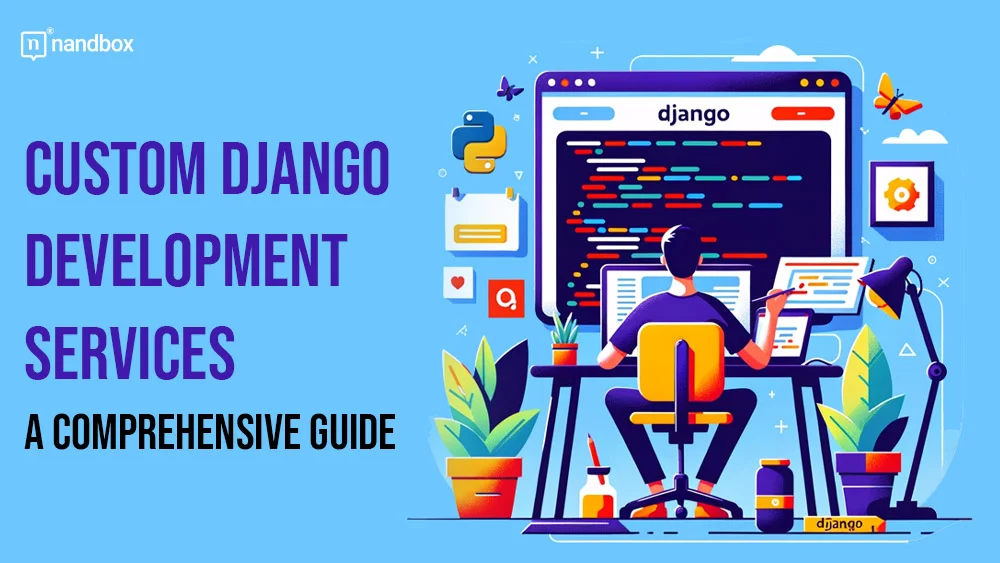The building of online digital services, be those sites or otherwise is rather lucrative in today’s world. And for those in need of the creation of these assets, creators are invaluable. However, the expertise needed to build from ground zero is known to a few, hence the need for things such as custom Django development services, according to SECL Group.
As you’ll soon see, what they do is provide one with the ability to create without serious coding knowledge. So, how exactly is any of this remotely achievable? The piece you’re about to read will delve into this exact thing. By the end, you may see value in acquiring such services.
Is It All-Encompassing?
In a world where a vast majority of small businesses have sites of their own, Django’s a framework that, simply put, makes online site-making quick and easy. Python is the language that makes all of this possible, primarily because of how it accommodates new users. Several things can be pointed to as reasons for Django’s ease of use and the most notable of these include:
- Its possession of reusable code, that ensures that nothing is made from ground zero
- The vast libraries within, facilitate feature creation, simplify it
- The great support within its community that makes life easy for newcomers in need of assistance
Solution for Complex, Large-Scale Projects
What the above qualities do is make the custom Django development solutions all the more desirable, as with them, you get a rather convenient way of getting things done. This means that making any sort of product is done in a quick manner that won’t blow out your budget.
One thing to note about any custom Django development services is that the framework allows for the creation of many things. This includes both iOS and Android apps, shopping, and real estate portals, with smart tech capabilities for IoT, ML, and general AI. This, in addition to its nature, makes it seem like an all-encompassing, one-size-fits-all tool, but that isn’t exactly the case.
This is because the framework’s computing power restricts projects to only the larger ones. This leaves smaller examples out of the loop. So while it is all-encompassing for larger projects, smaller ones wouldn’t say the same.
Vital Protective Attributes
Now, custom Django Development Services promise that they will make your project creation process quick, efficient, and overall more convenient. If another talking point were to be brought up, it would be the fact that the framework is very much on the secure side.
This is owing to several security features it possesses that are protection against certain issues. An example of an issue that’s guarded against is Cross-site scripting, which sees scripts on the client side injected into other users’ browsers. Attacks of this sort are a result of a few things such as:
- Suspicious databases
- Clicking on links of a similar nature
- Any cookie or service bearing unsanitary data
Protecting Web Apps with Security Features
The tool in question protects against this specific issue because of its templates, which, while not entirely able to guard against the problem, is quite sufficient. Django’s protection also extends to other issues, with cross-site request forgery, which sees bad actors act using another’s accreditation sans knowledge or permission from another.
All protections it has against this particular problem are in-built and are effective in the majority of attack situations. That said, considerations regarding subdomains, which may see limited protection, among other things should be thought of always.
Another security attribute that we’ll talk about in this piece is against SQL injection. This particular issue sees the execution of arbitrary code of this kind on databases by bad actors. The adverse effects of these include leakages or unwanted data deletion. Query parameterization is how the framework in question guards against such an injection, as it forms every query, the SQL code of which is separate from its parameters.
How It Works and Why It Matters
The last security attribute worth looking at is the guarding against clickjacking. In such attacks, bad actors are sites themselves and they frame others. The unfortunate result of such attacks is the manipulation of users to act on targeted sites against their will and unbeknownst to them.
Django can guard against this issue by keeping sites away from frames. Something that is achievable because of its X-frame-options middleware. When in a supporting browser, any fame-rendering of sites is prevented, making it perfect for a site whose pages don’t require framing by third parties.
Security Downsides
As far as Django’s downsides on a security level are concerned, some can be pointed to. Although even they are not disadvantages but rather considerations. One consideration concerning an issue that we’ve discussed above relates to the limitations. The cross-site scripting guard, for example, doesn’t guard against certain inputs. Also, great care has to be taken for HTML storage, particularly during retrieval and displaying.
Another thing that you should have to look out for is the relative complexity that accompanies some of the actions that can be performed. Some custom actions that Django protects, including those listed above, will come with caution, telling users to proceed with actions only if they know what they’re doing. Some actions that possess such warnings include:
- The writing of raw queries in SQL injection protection
- The execution of custom SQL
- The disabling of the CSRF module on a global scale for specific views
Final Thoughts
The development of custom Django one may employ is often pointed to for how relatively easy and quick it is, something that is owing to its being based in Python. That said, it isn’t exactly a one-size-fits-all tool, especially when you consider that it doesn’t fit with smaller projects. If you’re working on larger examples, then the all-encompassing label very much fits, as it can be used for just about anything.
This, in addition to the useful security features discussed above, makes the framework a go-to for any creator. The caveat is that the security attributes should be used correctly, hence the need to heed all caution.





